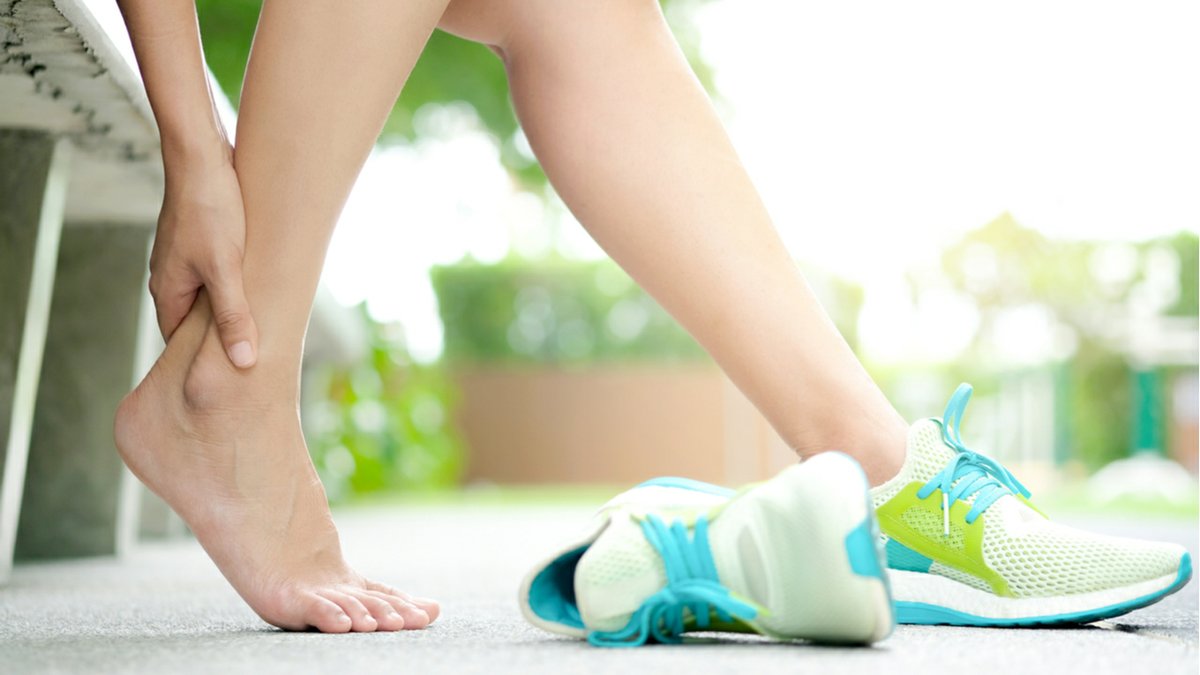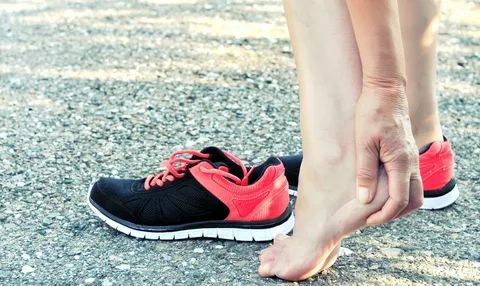Living with plantar fasciitis can be incredibly painful and uncomfortable. As a woman, it’s important to ensure that your feet are properly supported to keep the pain and discomfort to a minimum. This comprehensive guide will provide all the information you need to choose the best shoes for plantar fasciitis women. We will look at the features and benefits of different types of shoes and provide you with our top picks for the best shoes available.
Understanding Plantar Fasciitis in Women
Plantar fasciitis is a common ailment in women, affecting the plantar fascia, a thick band of tissue running across the bottom of the foot. Women are particularly susceptible due to factors like wearing high heels, which alters foot mechanics and increases strain on the fascia. Additionally, the female hormonal changes associated with pregnancy and menopause can weaken ligaments and contribute to this condition.
Women with plantar fasciitis often experience sharp heel pain, which can be exacerbated during pregnancy due to weight gain and hormonal changes. Wearing supportive footwear, doing foot exercises, and seeking medical advice for orthotic solutions are essential steps for managing plantar fasciitis and maintaining mobility and comfort in daily life.
The Importance of Choosing the Right Shoes for Plantar-Fasciitis
Living with plantar fasciitis can be incredibly painful and debilitating. Women must choose the right shoes that provide the necessary support and comfort for their feet. The importance of selecting the proper footwear cannot be emphasized enough, as it directly affects the pain and discomfort experienced daily.
Regarding plantar fasciitis, the right shoes can make all the difference. They provide the necessary cushioning and arch support to alleviate pressure on the inflamed plantar fascia, reducing pain and allowing for better mobility. Women can ensure that their feet are well-supported and protected throughout the day by choosing shoes specifically designed for plantar fasciitis.
In addition to offering relief from pain, wearing the right shoes can also help prevent further damage to the plantar fascia. By providing stability and proper alignment, these shoes help to distribute weight evenly, reducing the strain on the foot and minimizing the risk of exacerbating the condition.
Easing Plantar-Fasciitis Pain with Shoe Inserts
Finding relief from plantar fasciitis pain can be a game-changer, and shoe inserts are a great tool to help ease that discomfort. These inserts provide additional support and cushioning to the foot, reducing the pressure on the inflamed plantar fascia. They distribute the weight more evenly across the foot, allowing for better alignment and less strain on the affected area. Different shoe inserts are available, and the best choice for you depends on your specific needs.
Arch supports can help alleviate the pain by providing extra support to the foot’s arch. Cushioned inserts, on the other hand, offer added cushioning to absorb shock and reduce impact when walking or standing. When selecting shoe inserts, choosing ones that fit properly in your shoes and offer the right level of support is essential. Custom orthotics may be recommended for severe cases, but over-the-counter inserts can provide significant relief.
 Features To Look For In Shoes for Plantar-Fasciitis Women
Features To Look For In Shoes for Plantar-Fasciitis Women
When choosing the best shoes for plantar fasciitis in women, there are a few key features you should look for. First and foremost, good arch support is essential. Look for shoes with built-in arch support or the option to insert custom orthotics. This will help to alleviate pressure on the plantar fascia and provide better alignment for your feet.
Another important feature to consider is cushioning. Look for shoes that offer ample cushioning in the heel and forefoot areas. This will help to absorb shock and reduce impact while walking or standing, providing added comfort and support. Additionally, it’s important to choose shoes with a supportive and stable heel counter.
This will help to keep your foot in proper alignment and prevent excessive pronation or supination, which can aggravate plantar fasciitis. Lastly, consider the flexibility and traction of the shoes. Look for shoes that are flexible enough to allow for natural foot movement but have a good grip to prevent slipping and provide stability.
Best Types of Shoes: Sneakers, Sandals, Flats, and More
When it comes to finding the best shoes for plantar fasciitis in women, there are several types to consider. Sneakers are popular due to their cushioning and arch support, which provide the necessary comfort and stability for women with plantar fasciitis. Look for sneakers with a firm heel counter and a flexible sole to support your foot’s natural movement while reducing strain on the plantar fascia.
Sandals can also be a great option, especially during warmer months. Look for sandals with adjustable straps and a contoured footbed that provides arch support. Flats are another versatile choice, but be sure to opt for cushioning and support, as many flat styles lack the necessary structure for women with plantar fasciitis.
Tips for Buying and Wearing Shoes for Plantar Fasciitis Women
When buying and wearing shoes for plantar fasciitis, remember a few important tips. First and foremost, always prioritize comfort and support. Look for shoes with good arch support and cushioning, as these features will help alleviate pressure on the plantar fascia and reduce pain. It’s also important to find shoes that fit properly, so measure your feet accurately and try on multiple sizes and styles.
Another tip is to shop for shoes later in the day when your feet may be slightly swollen, giving you a more accurate fit. Additionally, consider the type of activity you’ll be doing in the shoes. If you’re looking for running shoes for plantar fasciitis women, for example, choose ones specifically designed for running and provide the necessary support for your feet. Lastly, feel free to seek professional advice.
A podiatrist or orthopedic specialist can provide valuable guidance on choosing the right shoes and may even recommend custom orthotics for optimal support and pain relief. Remember, finding the right shoes for plantar fasciitis may require some trial and error, so be patient and listen to your body. By prioritizing comfort, support, and fit, you can find shoes that will provide the relief and mobility you need to live your life to the fullest.
How to Care For and Maintain Your Plantar-Fasciitis Shoes
Taking care of your plantar-fasciitis shoes ensures their longevity and effectiveness in relieving your foot condition. Here are some tips to help you care for and maintain your shoes.
- Clean them regularly: Keeping your shoes clean is essential for preventing dirt and bacteria buildup. Use a damp cloth or sponge to wipe down the shoes’ exterior, paying special attention to any areas that may accumulate sweat or odour.
- Air them out: After each use, remove the insoles and let your shoes air out. This helps to eliminate any moisture or odours and prevents the growth of bacteria.
- Replace insoles regularly: Over time, the insoles of your plantar fasciitis shoes may wear out and lose their supportive properties. It’s important to replace them periodically to ensure optimal support and comfort.
- Avoid excessive heat: Exposure to excessive heat, such as leaving your shoes in a hot car or placing them near a heater, can damage the materials and structure of your shoes. It’s best to store them in a cool and dry place.
- Rotate your shoes: To prolong the life of your plantar fasciitis shoes, consider rotating them with other supportive pairs. This helps to distribute the wear and tear more evenly, extending the lifespan of each pair.
Orthotics: How They Can Help Women with Plantar-Fasciitis
Orthotics are a valuable tool in the battle against plantar fasciitis for women. These custom-made shoe inserts provide targeted support and alignment for the feet, helping to relieve pain and reduce discomfort. Orthotics work by providing additional arch support, which helps to distribute pressure evenly across the foot and reduce strain on the plantar fascia.
They also help to correct foot mechanics, ensuring that your feet are properly aligned and reducing the risk of further injury or aggravation to the plantar fascia. Orthotics can be a game-changer for women with plantar fasciitis, providing the necessary support and stability to keep you on your feet and moving comfortably throughout the day.
FAQ’s
Q: Can I wear high heels if I have plantar fasciitis?
A: It’s best to avoid wearing high heels, as they can strain the plantar fascia excessively. Opt for shoes with a lower heel or no heel to reduce pressure on the affected area.
Q: How often should I replace my shoe inserts?
A: Shoe inserts can wear out and lose their supportive properties over time. Replacing them every 6 to 12 months is recommended, depending on usage and wear.
Q: Can I wear orthotics in any shoe?
A: Most orthotics are designed to fit in regular shoes, but certain styles may need more space or support for the inserts. It’s best to try them in different shoes to find the most comfortable and supportive fit.
Q: What should I look for in shoes for plantar fasciitis women?
A: Look for shoes for plantar fasciitis women with excellent arch support and cushioning to relieve heel pain, opt for models with a supportive heel cup and a contoured footbed.
Q: Can I exercise with plantar fasciitis?
A: Yes, exercising can be beneficial for managing plantar fasciitis, but choosing low-impact activities and wearing supportive shoes is important. Avoid high-impact exercises that can worsen symptoms.
Conclusion
In this comprehensive guide, we have provided all the information you need to choose the best shoes for plantar fasciitis in women. We discussed the importance of selecting the right footwear, the benefits of shoe inserts, and the features to look for in shoes. We also explored different types of shoes that are suitable for women with plantar fasciitis. By following our tips for buying and wearing shoes and taking care of your footwear, you can find relief from the pain and discomfort of plantar fasciitis and continue to live an active and comfortable life.
| Other Good Articles to Read |
| Skank Blogs |
| Unreal Blogs |
| Tba Blogs |
| All City Forums |
| Dany Blogs |
| Refuge Blogs |
| The Music Blogs |
| Key Forums |
| The Big Blog Theory |
| Joe Blogs |
| Blogs 4 Me |
| Blogs Emon |

